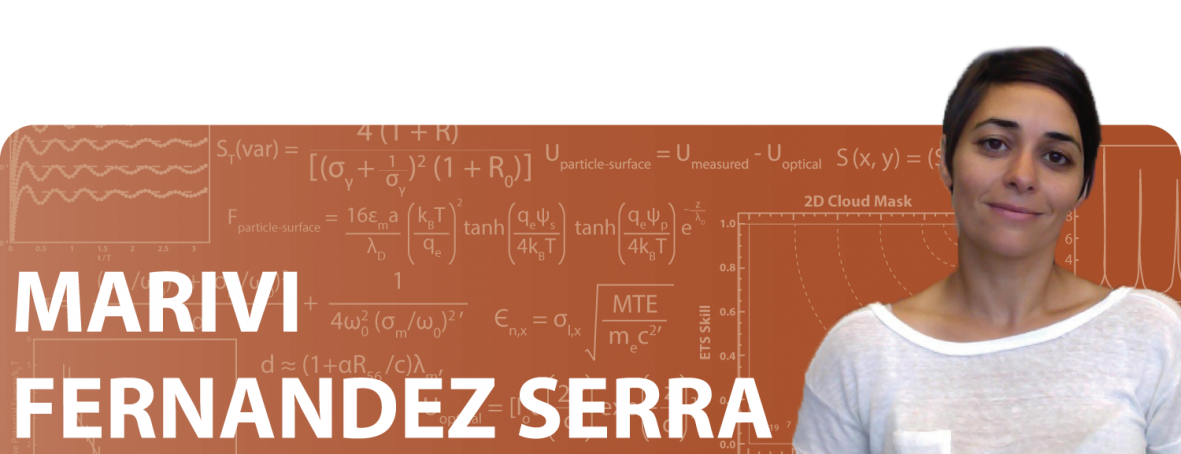WHAT DID THE 2010 EARLY CAREER AWARD ALLOW YOU TO DO?
A five-year funding commitment is essential to give the group leader confidence and time to work high risk/high reward type of projects which would not be considered if the funding source duration is much more limited.
We proposed to develop new computational methods to understand the electrochemical interface. This is the interface between an active material like an electrode or a semiconductor and a liquid, like water. Thanks to the DOE career award, I was able to hire a post-doc (who is now a professor in Brazil) and three PhD students, who worked together for three years.
It also gave us the resources to travel to conferences to present our results. This was very important because the team worked together very efficiently. While each team member had an independent project, they all learned from each other because all the projects were linked by a core topic, in our case, liquid water.
We produced a number of significant publications and developed a number of new methods and codes, which are now routinely used in my group. By the end of the award, we had expanded our original idea into a solid research program that has promoted me through the academic scale.
Now, eight years after the award, I’m a full professor in my department. I still work on understanding the solid/liquid interface, but with a background of knowledge that would not have been possible without the DOE career award.
ABOUT:
Marivi Fernández-Serra is a professor in the Department of Physics and Astronomy at Stony Brook University.
SUPPORTING THE DOE SC MISSION:
The Early Career Award program provides financial support that is foundational to young scientists, freeing them to focus on executing their research goals. The development of outstanding scientists early in their careers is of paramount importance to the Department of Energy Office of Science. By investing in the next generation of researchers, the Office of Science champions lifelong careers in discovery science.
For more information, please go to the Early Career Research Program.
THE 2010 PROJECT ABSTRACT:
First Principles Modeling of Metal‐Electrolyte Systems: A Novel Approach to the Study of the Electrochemical Interface
This project aims to computationally improve fundamental understanding of electrically induced chemical reactions in the condensed phase and at the liquid‐metal interface. Improvement of future energy production and delivery systems — such as fuel cells, batteries, and next‐generation hydrogen‐production devices — require an unprecedented and detailed fundamental understanding of the interactions and processes occurring at the liquid‐metal interface. The rate at which these processes occur ultimately determines the power of such systems. However, these rates are known to change as the system begins to deliver electricity and when the system is exposed to electromagnetic radiation such as sunlight. The power output is also strongly influenced by the very nature and peculiarities of the electrolyte. This work capitalizes upon a broad base of recent advances of quantum‐mechanical computational methods to systematically understand how chemical reaction rates occurring at the liquid‐electrode interface can be modified to optimize the system’s power. Further, it seeks to extend these capabilities so that simultaneous modeling and optimization of both the electrolyte and electrode can be realized in the first half of this decade. In addition to fuel cells and batteries, future technologies which depend on these fundamental advances include advances in photocatalysis, which will lead to solar induced water‐splitting for hydrogen production and the eventual understanding of light‐induced production of more complex fuels.
RESOURCES:
L.S. Pedroza, P. Brandimarte, A.R. Rocha, and M.V. Fernández-Serra, “Bias-dependent local structure of water molecules at a metallic interface.” Chem. Sci. 9, 62 (2018). [DOI: 10.1039/C7SC02208E]
D. Elton and M.V. Fernández-Serra, “The hydrogen-bond network of water supports propagating optical phonon-like modes.” Nature Communications 7, 10193 (2016). [DOI: 10.1038/ncomms10193]
L. Pedroza, A. Poisier, and M.V. Fernández-Serra, “Local order of liquid water at metallic electrode surfaces.” J. Chem. Phys. 142, 034706 (2015). [DOI: 10.1063/1.4905493]
Additional profiles of the 2010 Early Career Award winners can be found at https://www.energy.gov/science/listings/early-career-program.
The Office of Science is the single largest supporter of basic research in the physical sciences in the United States and is working to address some of the most pressing challenges of our time. For more information, please visit https://www.energy.gov/science/office-science.
Original post https://alertarticles.info



